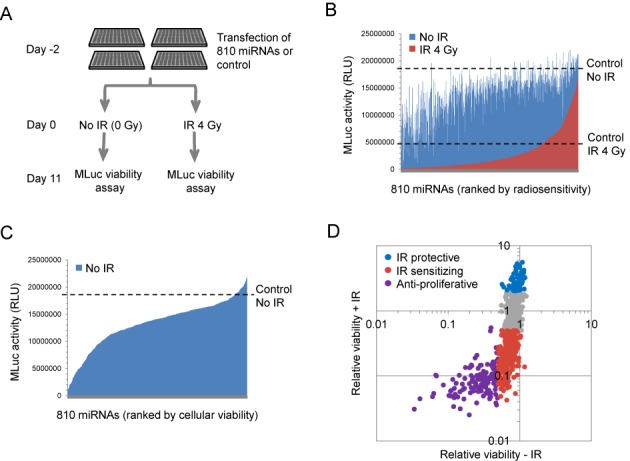Figure 1.

High-throughput functional screening for miRNAs which modulate prostate cancer viability and radiosensitivity. (A) A schematic representation of the high-throughput miRNA functional screening. (B) The average viable cell density (represented by MLuc activity) of irradiated (red) and non-irradiated (blue) LNCaP-MLuc cells on day 11. The data are organized as a bar graph waterfall plot for each miRNA and ranked by sensitivity to IR. Average cell response to control miRNAs, with and without IR, are represented by the two dashed lines. RLU; Relative Light Units. (C) Average LNCaP-MLuc viable cell density (represented by MLuc activity) after treatment with 810 different miRNAs, in the absence of IR. The results of the non-irradiated cells are represented again as a separate bar graph waterfall plot, with miRNAs ranked by viable cell density. Average signal with a control miRNA is represented as a dashed line. (D) Categories of miRNA responses based on cell viability and radiation sensitivity modulated by 810 miRNAs. The MLuc activity for each miRNA was normalized to control miRNAs and quantified as relative cell viability with or without IR.
